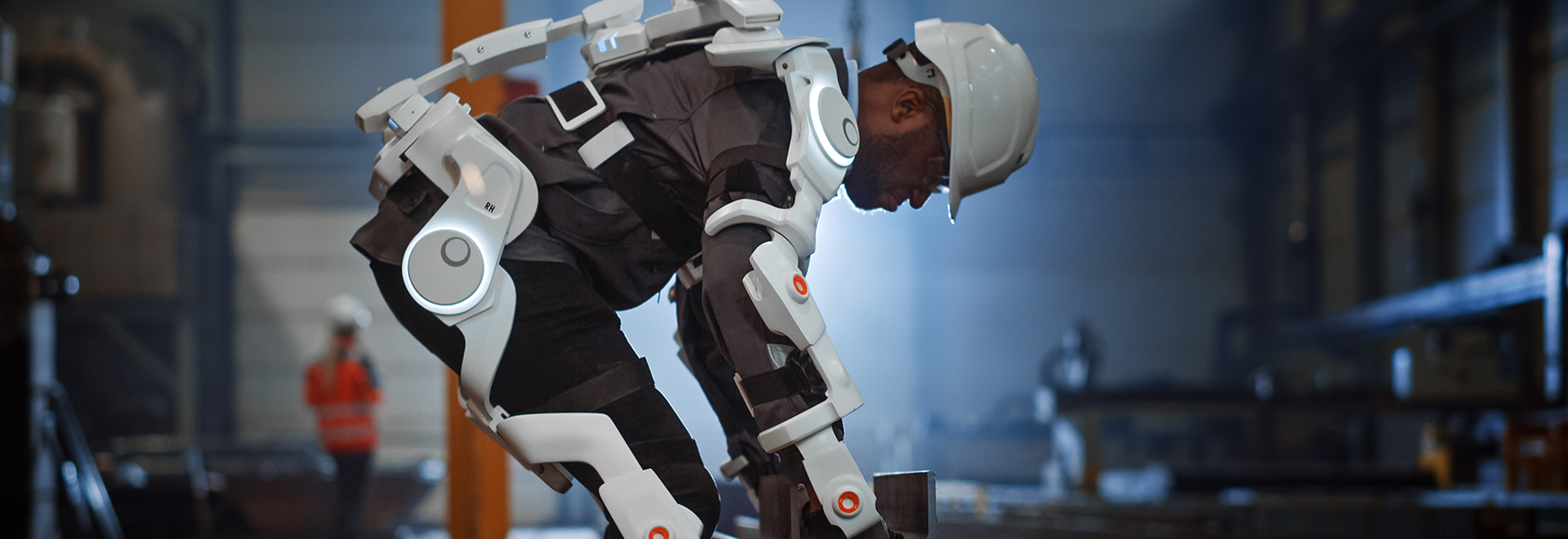The Future is Now with Wearable Technology

There’s little doubt implementing safety standards and regulations improves workplace safety. Since OSHA was established in 1971, workplace fatalities have been cut by 60 percent, and occupational injury and illness rates are down 40 percent. However, in 2021 there were still more than 5,000 fatal work injuries and more than 2 million nonfatal workplace injuries and illnesses. Clearly, there is room for improvement. But determining the right direction can be daunting.
Wearable technologies provide one exciting new way to encourage safe behaviors, quickly identify and communicate hazards, and assist in heavy work. You may be using one right now.
Some wearable solutions are widely available and readily accessible. Smart watches and phones can track a worker’s steps, activity intensity, heart rate, sleep habits, and more. While brands vary in dependability and accuracy, they help employees change health habits, set goals, and raise awareness of personal behaviors that have an impact on work safety.
Additional apps remind employees to get up and stretch, take a break, or hydrate. OSHA's Heat Safety Tool monitors the heat index. Other weather apps warn of severe weather conditions allowing workplaces to immediately implement safety plans.
More specialized wearable sensors are used to monitor radiation, respiratory hazards, and noise exposure, identifying the need to change operations or improve personal protective equipment. Patches are available to monitor electrolytes in sweat on the skin, to guide individual optimal hydration. Wearable sensors that monitor body position can be used to calculate force and repetition, and identify awkward postures, helping employers prioritize changes to workplace practices.
By connecting wearable sensor data to a cloud-based software platform, employers can immediately identify dangerous situations and notify workers in real time, directly in the field. Existing examples of this include falls, crashes, gas leaks, low oxygen detection, and intruder alerts. Individual and vehicle GPS data that easily locates employees at risk, redirects around hazards, and can be analyzed to improve the efficiency of workflow are still more examples of existing sensor systems supporting safety.
Exoskeletons – another type of wearable –promise to reduce musculoskeletal injuries from repetitive motion, significant force, and awkward postures by assisting or enhancing body movements and decreasing the amount of muscle force needed to complete a task. To be effective, exoskeletons must be fit to the task, and to the worker. There also is currently a lack of standardization and wide variability in effectiveness. But the future of wearables is promising.
Earlier this year, an Illinois State University research team was awarded the 2023 MEMIC Safety Research Center grant to study ways wearable sensors might maximize performance and minimize injuries in warehouse settings. It will be exciting to see the results of this and similar studies, and MEMIC policyholders stand to benefit from any best practices revealed by the team, led by Illinois State University Katie School of Insurance and Risk Management Executive Director James R. Jones, along with principal technical investigator Dr. Tice Sirmans, two graduate students in actuarial science, and four undergraduates majoring in risk management and insurance.
The grant program -- one of the ways MEMIC helps policyholders innovate to reduce incidents and fatalities -- is open to researchers at your alma mater. Do you know someone interested in applying for a $30,000 grant? Apply here by Oct. 20. More information can be found here.
For more information about wearable technologies:
- Advanced Sensor Technologies and the Future of Work | Blogs | CDC
- How Wearable Technology is Transforming Safety and the Industrial Workplace -- Occupational Health & Safety (ohsonline.com)
- Exoskeletons: Potential for Preventing Work-related Musculoskeletal Injuries and Disorders in Construction Workplaces | Blogs | CDC
- A Weighty Proposition: Exoskeletons in the Workplace | EHS/Today

